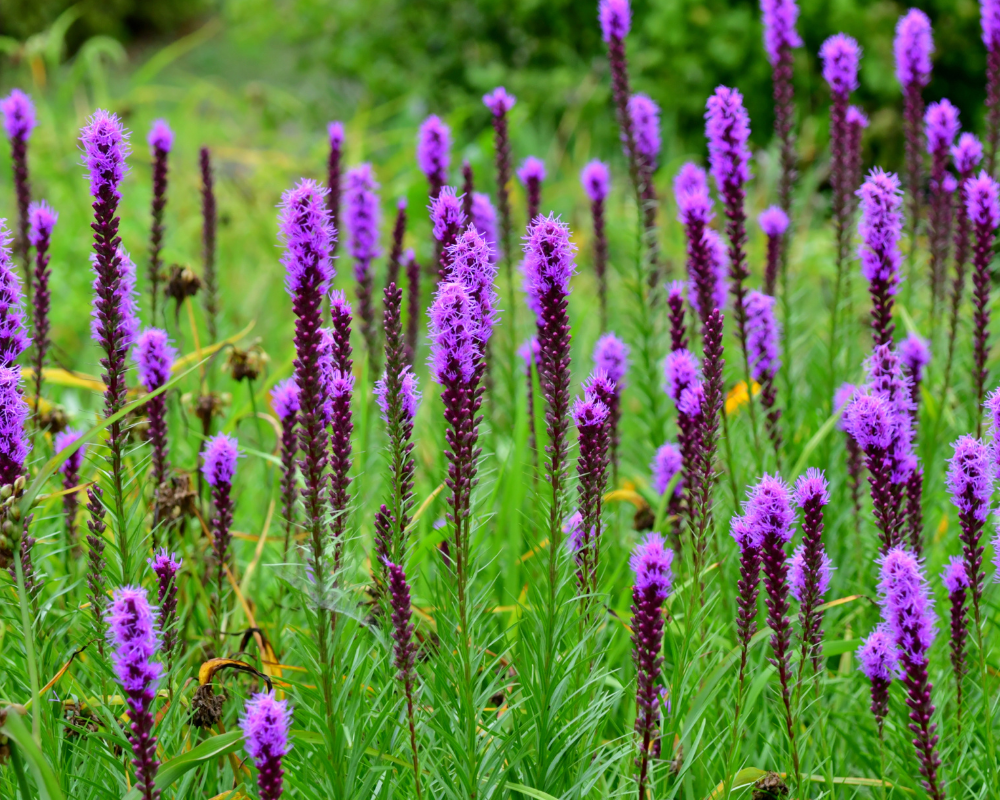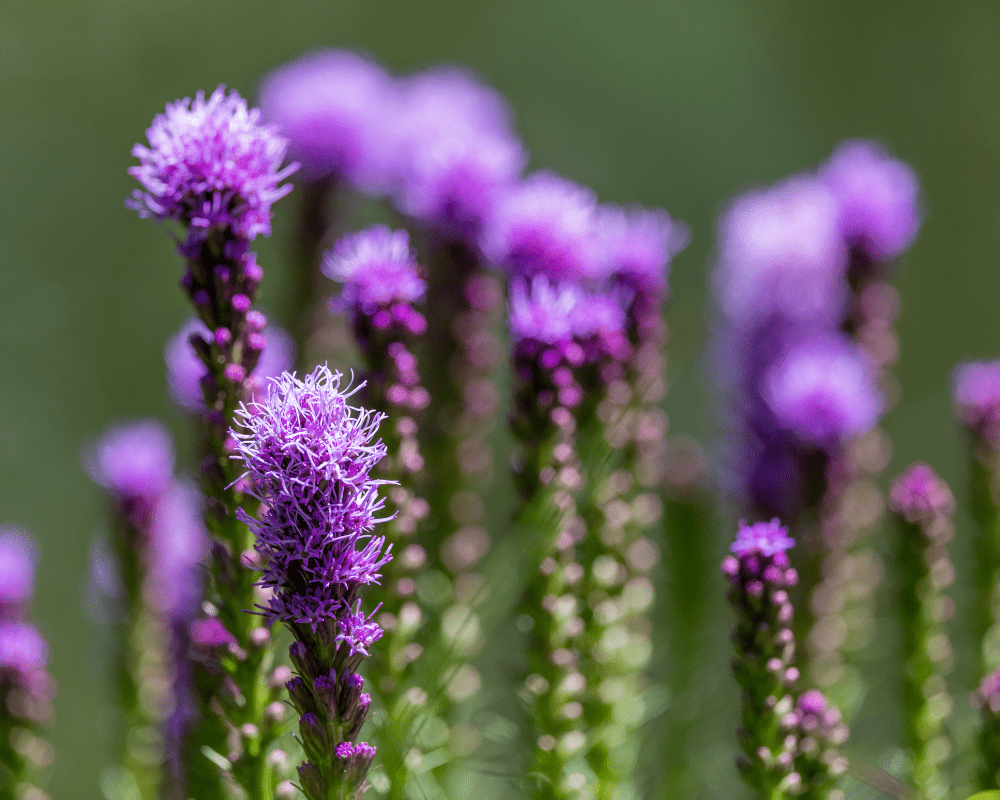

Gayfeather (Liatris spicata) Characteristics
Plant Liatris spicata 6” to 1’ apart in well-worked gardens enriched with organic material. This will help provide the slight acidic to neutral soil pH they do best in. Liatris will spread by shallow corms and also propagate itself by seed. Gayfeather looks stunning when planted in mass. The showy flowers are a welcome treat in early fall and make a fun cut flower specimen.


If you’ve never seen Liatris in action, you are in for a treat. One of the reasons Gayfeather is appreciated for its pollinator-attracting qualities is that its bloom time coincides with the fall migration of the Monarch butterflies in fall. From late July to October (and sometimes longer), the purple-tufted spikes bloom and lure in all sorts of pollinators. Butterflies, bees, and hummingbirds seek out the nectar on the tall stalks lined with purple flowers, while birds devour the seeds in winter.
It is important to know, for those of you just getting started with Gayfeather, that it is a perennial and also a wildflower. This means it can take up to 3 years for full bloom production. This is a plant-it-now and reap-the-benefits-later type of plant, not an instant gratification type of plant. But the wait could be well worth it for those of you who are really interested in pollinator gardening. You will get a few spikes with blooms the first year, more the second, and then have a great production year three.


A Quick Look at Gayfeather, (Liatris spicata)
Other Names: Gayfeather, Dense Blazing Star
Category: Herbaceous Perennial Wildflower
Light Exposure: Full Sun (6 hours or more)
Average Growth at Maturity: 3-4 feet (sometimes taller) x 1-2 feet wide
Soil Preference: Clay, Loam, Sand, moist but well-draining
Water Usage: Medium
Bloom Color: Lavender-Purple/Pink-Purple
Foliage Type: Delicate grasslike clumping bases with tall, rigid stems
Hardy to Zone 10
If you would like to learn more about the native Gayfeather (Liatris punctata var. mucronata), you can read up on it both at The Texas Butterfly Ranch and Wildflower.Org. Just know that we do not currently have that specimen here at Rainbow Gardens.
~The Happy Gardener, Lisa Mulroy

